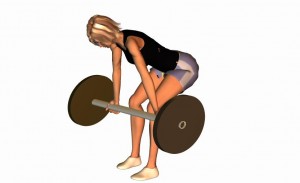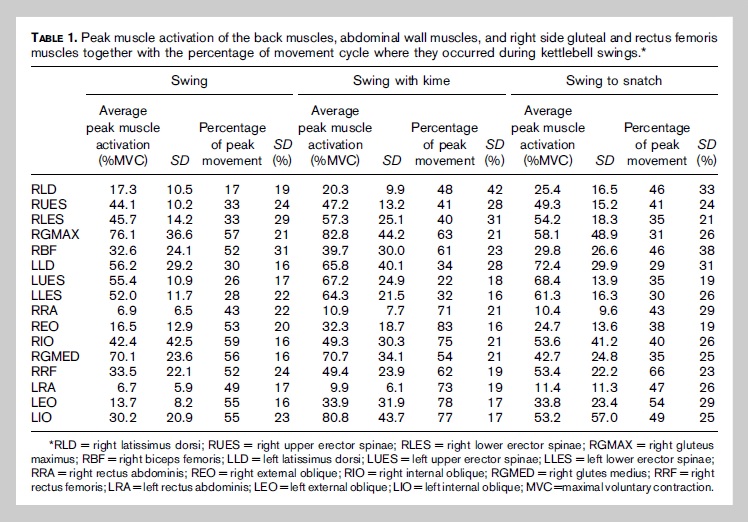Background
The piece was part of a companion piece on resistance and “core” training for runners. The thrust of that piece was that general resistance training should come first before gut-blasting 5 session/week plank marathon sessions should occur.
Purpose: core exercises are rampant and extremely hyped. They are much too popular and I think many athletes not working with strength coaches focus on the core and perhaps neglect other body parts. A not at all new thesis is that many simple core exercises can be replaced by compound exercises that have other goals (e.g. train the legs) but still require great core activation.

When I was actively researching exercise biomechanics a goal was to try to document the EMG dosage of the entire trunk and hips during ever single exercise. My thesis was that basic core exercises (curl ups, bird dogs, superman, bridges) were not necessary for many athletes and the general population. I still advocated them to patient (and still do) but really thought you could have a comprehensive conditioning program without doing them -we could get an appropriate core workout by training squats, deadlifts, olympic lifts, sprinting, knee drives, plyometrics etc. In our pilot work we were seeing trunk muscle EMG activity during squats, deadlifts, cleans, jumping, pull ups, pushups etc that was comparable to the activity seen during traditional core exercises. It wasn’t as high as we thought but it was still comparable to standard core exercises (The reason it was not as high as we predicted was later explained in an excellent paper by Stu McGill here).
When I was a biomechanics researcher most of my work focused on cataloging the “dosage” of muscle activity during exercise. I wanted to create a massive document that quantified the muscle activation dosage for the trunk and hips during every exercise. But then I was slowly pushed out the door. And naturally this type of research was not considered valuable at the chiropractic college where I worked. Because, you know back cracking is so much more important for the body then exercise. (where is the sarcasm font?).
Below, I am trying to catalog trunk muscle activity during strength training exercises that are not traditional simple core exercises. It is a bit crude and not complete but if you know of other research please send it along.
You can train the core without actually targeting the core
I want to reiterate - the core is still important. No part of the body should be neglected. But perhaps there is a more efficient way to train the core.
Below I will highlight the muscle activation of the trunk during simple core exercises and then compare this with the trunk muscle activity during compound lower body or full body exercises. What you will see is that the muscle activity in the core is comparable or exceeds that of traditional core exercises AND you are getting the true beneficial effect of working the legs and the hips. All values are expressed as percentage of that muscle’s maximum activity.
Prone Bridge (Pr Br), Side Bridges and Supine Bridges (Su Br) (from a crummy paper of mine here)
(Pr Br = Prone Bridge, Su Br = Supine Bridge, IO = Internal Oblique, RA = Rectus Abdominis, EO = External Oblique - source: my old research here)
Curl ups and Leg Raises (My only good publication Here)

Core muscle activity during Compound movements that don’t specifically try to target the core
Squats:
From our pilot work and some research findings a few years ago the amount of EMG activity in the anterior/lateral core was a bit of a disappointment. it was a lot less than we thought. I had hypothesized that the “ab” muscles actually worked a great deal during a squat. I was wrong. In the following table from Bressel (2009)we can see that ab activity during a loaded barbell squat at 75% 1 repetition max was pretty low. The only muscle to see any significant activity (around 40% of max) was the internal obliques and only when the subjects actively braced their spine.s
An aside: A neat implication for this relates to the FMS test of the overhead squat. I hear the great trainers at my work suggest that many people can’t do a deep overhead squat because of the strength or stability of their “abs”. This never quite made sense to me. Its an unloaded movement and you don’t need a lot of activity in this area. Why would the front of the trunk need to be active. There is no external torque that wants to extend the back and stability we should know requires minimal co-activation (less than 15% activation). I can see why a weakness in erector spinae may be an issue but no anterior-lateral muscles could every possibly be a culprit. Unless its a motor control idea but that needs to be fleshed out more.
In other work by the great David Behm’s group (Hamlyn 2007) they concluded that the anterior and lateral abs were active to a comparable amount during an 80% squat, 80% deadlift, body weight squat, superman and sidebridge exercise. This seems a bit odd since the side bridge can see oblique activity greater than 40% max. This suggests the squat and deadlift exercise had comparable activity. This is certainly in conflict with the Bressel study. Unfortunately, the authors did not provide the amount of muscle activity that occurred in the abs during any of the exercises. They just told us that there was no difference.
The Erector Spinae work their tendons off though
Where we do see huge muscle activation levels in the core during squats and the deadlift is in the erector spinae. During heavy squats and heavy deadlifts (75-80% 1 repetition maximum loads) we see muscle activity greater than 100% of maximum.
Deadlift
From (Escamilla 2002) lifting a weight that corresponds to a 12 repetition maximum:
Rectus Abdomonis: 60%
Internal Obliques: not studied
External Obliques: 56%
Erector Spinae @L3: 32%
Erector Spinae @ T12: 33%
Again, we see some conflicting activity here. The previous studies muscle activation levels greater than 75% maximum yet Escamilla found much less. Regardless, we certainly see significant activity in the core.
Push Up Variations: (Freeman 2006)
Push ups are awesome. You get huge anterior and lateral muscle activation especially when you increase speed and stagger your hand position. What a great exercise. Stop doing bridges just do push ups.
Kettlebell Swings (McGill 2012)
The following table highlights how well Kettlebell swings and variations can target the majority of the core. However, we don’t see a lot of activity in the rectus abdominis or external obliques. These findings suggest that other exercises still need to be incorporated to train these muscles to full capacity.
Overview of core activity during compound exercises.
What we see here is muscle activity during compound movement exercises (Squats, Deadlifts, Push Ups, kettlebell swings) that is comparable to or exceeds that which occurs during many basic core exercises. This means you can be evidence based and train the primary drivers of locomotion while still covering your bases and address all the muscles of the trunk.
In a nutshell:
- push up variations are excellent for the front of your core (rectus abdominis and obliques)
- loaded squats and deadlifts are great for the posterior and lateral core
- kettlebell swing variations train everything with the exception of the rectus abdominis
Going Forward and Limitations
We are missing (or I can’t find it) is good data comparing plyometric or more ballistic exercises with traditional mat based core exercises.
The problem with different research groups is that they use different techniques and its difficult to compare across studies. You can see that with the different results in almost the same exercises studied above
Anyone want to send me an 8 channel EMG unit and 16 fit volunteers for one week? Once you get research ethics approval you could literally hammer out the data collection on ten research papers in a week.
Some Caveats
- basic core exercises still have value. Sometimes focusing on the core is necessary to get very high levels of activity in certain muscle groups. An example would be the “stir the pot” exercise to target the anterior/lateral trunk. You can’t get these high levels of trunk activity if you do a cable punch with heavy resistance (another surprise and arrow in one of my previous theories that we found in some pilot work).
- core specific exercise can still be valuable if you do some corrective exercise work. I am not saying to stop doing that. If that is your philosophy and approach this article takes nothing away from that
- people with pain or dysfunction may also benefit from doing some core specific work. These could be bird dogs, glut bridges or pelvic floor work. There is still value in these exercises. I’m not saying to abandon them






Greg,
Great post here. The concept of employing specific core exercises seems to have been carried a little too far in fitness, performance, and rehabilitation. In your opinion, what are the specific indications for prescribing traditional core stability exercises for the patient or athletic populations? In other words, what are the reasons why you’d want to train the core muscles either maximally or in isolation for either of these populations?
Bill
Hi Bill,
1. Pain: sometimes I use specific core exercises to stress an area of the trunk where the patient feels vulnerable. This is a graded exposure approach to build confidence. Naturally, you also get improvements in function but these aren’t the only reasons that I choose the exercise.
2. I like specificity of training but I think we still get benefits from just training strong/for power to other goal specific activities. Thus if I wanted to overload a specific part of the trunk I would look at using a “core specific exercise”. Stirring the pot exercise is a great example. it really gets high levels of activity and really overloads the anterior trunk. But again, this would be done just 1-2 x/week just like someone would train squats or deadlifts. I was trained by the grandfater of specificity, Digby Sale, and even he would acknowlege that there are performance benefits when you train generally. We see this in the research on golf driving distance. We have a few studies showing increase in golf swing speed in golfers who did very generic strength programs.
3. an evidence based approach: sometimes I can’t think of a mechanism that I totally agree with but I recognize that there is research to support it. If patients have urinary incontinence we know that training the pelvic floor muscles specifically helps with that dysfunction.
Best,
greg